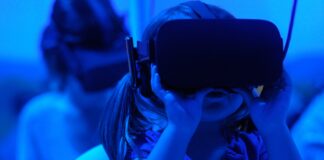Forensic technology refers to the application of scientific and technological methods to investigate and solve crimes. It plays a crucial role in criminal investigations by providing tools and techniques to collect, analyze, and interpret evidence. Here, we delve into the intricate world of forensic technology, exploring its various facets, methodologies, and impact on the criminal justice system.
Forensic technology encompasses a wide array of scientific disciplines, each contributing unique tools and methodologies to the investigative process. DNA analysis stands out as a cornerstone of modern forensic science. The ability to extract and analyze genetic material from crime scenes, victims, and suspects has revolutionized criminal investigations. DNA profiling not only aids in identifying individuals but also helps establish or exclude connections between evidence and potential perpetrators.
Beyond DNA analysis, forensic technology includes disciplines such as fingerprint analysis. Fingerprint patterns are unique to each individual, making them a valuable tool for identifying suspects. Advances in fingerprint recognition technology, including automated systems and digital databases, enhance the speed and accuracy of matching fingerprints found at crime scenes with those on record.
Forensic toxicology is another critical component of forensic technology, focusing on the analysis of biological samples to detect the presence of drugs, poisons, or other toxic substances. This discipline is instrumental in cases involving drug-related offenses, poisoning, or suspicious deaths. Analyzing blood, urine, or other bodily fluids provides insights into an individual’s exposure to substances that may have contributed to a crime.
Forensic technology extends its reach to digital forensics, a field dedicated to investigating crimes involving digital devices and electronic evidence. This includes the recovery and analysis of data from computers, smartphones, and other electronic devices. Digital forensics experts play a pivotal role in uncovering digital trails, such as emails, text messages, and files, that may be crucial to understanding the motives and actions of individuals involved in criminal activities.
Forensic odontology, the examination of dental evidence, contributes valuable information in cases where dental records or bite marks are relevant. Dental records can be used to identify individuals, while bite mark analysis helps establish connections between bite marks found at crime scenes and potential suspects. Forensic odontologists use their expertise to match dental characteristics and identify individuals based on dental evidence.
Firearms and toolmark analysis is another integral aspect of forensic technology. This discipline involves the examination of firearms, bullets, and cartridge cases to determine whether a particular firearm was used in a crime. Toolmark analysis extends this concept to examine tools or instruments that may have been used to commit a crime. The unique characteristics left on bullets or tools during use provide forensic experts with valuable insights.
Forensic anthropology involves the examination of human remains to determine the identity, cause of death, and other relevant information. Forensic anthropologists use skeletal analysis to establish factors such as age, sex, and ancestry. In cases where traditional identification methods may be challenging, forensic anthropology becomes a crucial tool for providing insights into the circumstances surrounding a person’s death.
Forensic entomology utilizes knowledge of insect behavior and life cycles to estimate the postmortem interval (PMI) in cases involving decomposed bodies. Insects colonize a body in a predictable sequence, and their presence and developmental stage can provide forensic experts with valuable information about the time of death. This discipline is particularly useful when traditional methods for estimating the PMI are insufficient.
Forensic document examination involves the analysis of documents, handwriting, and signatures to establish authenticity, identify forgeries, or link documents to individuals. Forensic document examiners use a combination of scientific methods and expert analysis to scrutinize writing patterns, ink compositions, and other characteristics that may reveal important information about the origin and legitimacy of documents.
Forensic technology is continuously evolving, driven by advancements in scientific research and technological innovation. The integration of artificial intelligence (AI) and machine learning into forensic analyses is a notable trend. These technologies enhance the speed and accuracy of data analysis, particularly in fields like facial recognition, pattern matching, and data mining, expanding the capabilities of forensic investigations.
Forensic technology is a multidisciplinary field that employs scientific principles and technological tools to unravel the mysteries of crime. From DNA analysis to digital forensics, each sub-discipline contributes to the comprehensive toolkit available to investigators. The continuous advancement of forensic technology ensures that the criminal justice system is equipped with the latest tools to uncover evidence, identify perpetrators, and deliver justice.
The impact of forensic technology extends beyond individual cases to influence broader legal and criminal justice systems. The reliability and precision of forensic evidence can be pivotal in determining guilt or innocence, shaping legal outcomes, and ensuring the fair administration of justice. However, it’s essential to recognize that the field is not without its challenges and controversies. As forensic science advances, the importance of ensuring the reliability and validity of forensic methods becomes paramount. Issues such as the potential for human error, the need for standardized protocols, and the interpretation of complex scientific data underscore the importance of ongoing research and scrutiny within the field.
The international forensic community plays a crucial role in establishing standards and best practices. Collaborative efforts among forensic scientists, researchers, and legal professionals contribute to the development of guidelines that enhance the consistency and credibility of forensic analyses. Organizations such as the International Association for Identification (IAI), the American Academy of Forensic Sciences (AAFS), and INTERPOL provide platforms for knowledge exchange, training, and the establishment of ethical standards within the global forensic community.
Forensic technology also intersects with legal and ethical considerations, particularly as it relates to privacy and individual rights. The collection and analysis of various forms of evidence, including DNA and digital data, raise questions about the boundaries of surveillance and the protection of civil liberties. Striking a balance between leveraging technological advancements for investigative purposes and safeguarding individual rights remains an ongoing challenge for legal systems worldwide.
Moreover, the public perception of forensic technology is shaped by popular media, including television shows and movies. While these portrayals often dramatize and simplify the forensic process for entertainment purposes, they also contribute to the expectations and understanding of forensic evidence among the general public. Bridging the gap between the portrayal of forensic science in popular culture and its reality requires effective science communication to ensure that the public is informed about the capabilities and limitations of forensic technologies.
In recent years, concerns about the reliability of certain forensic techniques, such as bite mark analysis and hair comparison, have led to increased scrutiny and calls for reform. The National Academy of Sciences (NAS) in the United States has been instrumental in highlighting these concerns and advocating for improvements in forensic practices. This scrutiny has led to a renewed emphasis on research, validation studies, and the development of more robust standards to enhance the scientific foundation of forensic analyses.
As forensic technology continues to evolve, there is a growing recognition of the need for interdisciplinary collaboration. The integration of expertise from fields such as computer science, statistics, and engineering is increasingly valuable in advancing forensic analyses. For example, the use of statistical models and probabilistic genotyping in DNA analysis enhances the accuracy of results and provides a more nuanced understanding of complex genetic profiles.
The advent of next-generation sequencing (NGS) technologies has further transformed DNA analysis, allowing for more comprehensive and detailed examinations of genetic material. NGS not only improves the sensitivity and specificity of DNA profiling but also enables the analysis of degraded or mixed samples, expanding the scope of forensic investigations. These technological advancements underscore the dynamic nature of forensic science, as researchers and practitioners strive to stay at the forefront of innovation.
In conclusion, forensic technology represents a dynamic and multidisciplinary field that continues to play a pivotal role in the pursuit of justice. From DNA analysis to digital forensics, the evolution of forensic techniques is driven by scientific innovation, technological advancements, and a commitment to refining investigative practices. As the field navigates challenges and embraces new methodologies, the collaborative efforts of scientists, legal professionals, and policymakers remain essential in ensuring the reliability, validity, and ethical use of forensic evidence in the pursuit of truth and justice.














